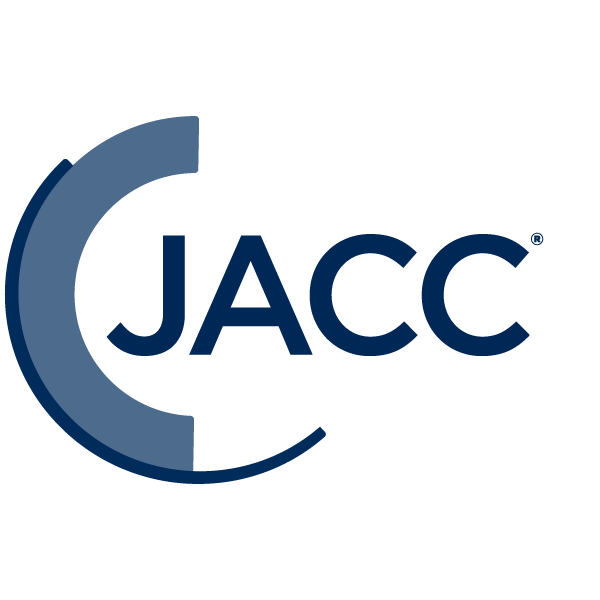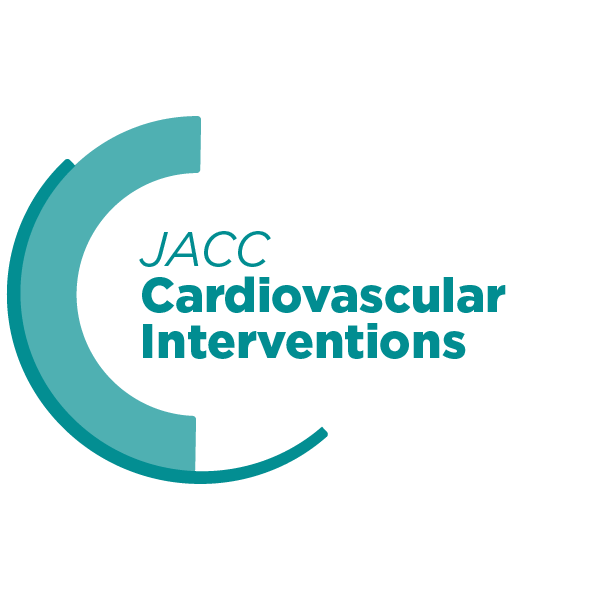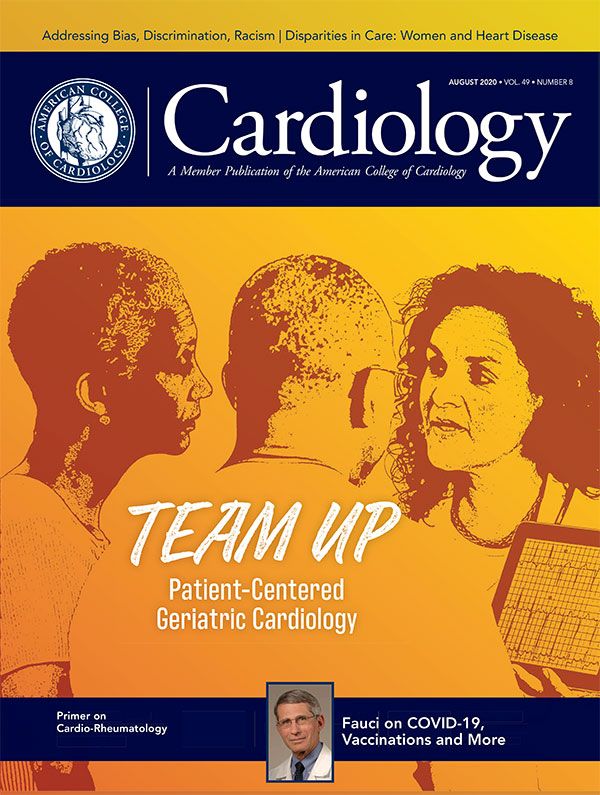JACC in a Flash
Featured topics and Editors' Picks from all of ACC's JACC Journals.
JACC: Asia Being Launched By ACC

The ACC is expanding its JACC family of high-quality peer-reviewed journals to include JACC: Asia, which will publish original manuscripts focused on Asian populations and by Asian authors. The Journal will be the first region-specific cardiovascular journal with original peer-reviewed content.
"JACC: Asia will give an important voice to the significant and growing amount of scientific research coming from Asia, specifically China, Japan and South Korea," says Valentin Fuster, MD, PhD, MACC, editor-in-chief of JACC. "With nearly 60% of the world's population residing in this vast region, distributing this research is key to optimizing cardiovascular care and saving lives."
JACC: Asia, an online-only Open Access journal, will cover topics ranging from cardiovascular health and prevention to late-stage interventions specifically within East Asian populations. The Journal will also feature clinical practice guideline recommendations focused on Chinese, Japanese and South Korean patients who have or are at risk of developing cardiovascular disease. The open call for an editor-in-chief will begin in August 2020.
"The ACC has long recognized the importance of providing localized cardiovascular education, training and clinical guidance in achieving our mission of transforming cardiovascular care and improving heart health – especially in Asia," says ACC President Athena Poppas, MD, FACC. "JACC: Asia will complement these efforts and ensure cardiovascular clinicians and researchers continue to be out in front when it comes to preventing and treating heart disease."
JACC: Asia will begin publishing manuscripts in early 2021.
Cardiac Troponin, Myocardial Injury and COVID-19

Increases in cardiac troponin indicative of myocardial injury may be common in patients with COVID-19 and associated with adverse outcomes such as arrhythmias and death, according to a paper published in the Journal of the American College of Cardiology.
Yader Sandoval, MD, FACC; James L. Januzzi Jr, MD, FACC; and Allan S. Jaffe, MD, FACC, summarize the evolving understanding of myocardial injury and explain that the increases in cardiac troponin are more likely to occur in patients with chronic cardiovascular conditions and severe COVID-19. They add that increased inflammatory and prothrombotic responses following SARS-CoV-2 infection enhance the risk for acute nonischemic and acute myocardial infarction (MI), particularly type 2 MI.
The authors note that while myocarditis, stress cardiomyopathy, acute heart failure and direct injury from SARS-CoV-2 are important etiologies, primary noncardiac conditions such as pulmonary embolism, critical illness and sepsis probably cause more of the myocardial injury.
Furthermore, the authors explain that no established therapies exist for myocardial injury associated with COVID-19. In general, for patients with myocardial injury, the same concepts apply for patients with and without COVID-19. The authors stress that management decisions should be based on serial measurements that facilitate decision-making.
"The structured use of serial cardiac troponin testing has the potential to facilitate risk stratification, help make decisions about when to use imaging, and inform stage categorization and disease phenotyping among hospitalized COVID-19 patients," the authors conclude.
Sandoval Y, Januzzi JL Jr, Jaffe AS. J Am Coll Cardiol 2020;July 8:[Epub ahead of print].
Statins in Healthy Older Adults Prevent Physical Disability, CVD

Statins appear to prevent physical disability and cardiovascular disease in healthy community-dwelling adults ≥70 years old, but do not prolong disability-free survival or avoid the risk of death or dementia, according to a study published in the Journal of the American College of Cardiology.
Using data from the double-blind, randomized ASPREE trial, researchers analyzed outcomes in 18,096 participants living in the U.S. and Australia, with a median age of 74.2 years; 56.0% were women. All participants were free of documented cardiovascular disease, dementia and disability. Cox proportional hazards regression with inverse probability weighting was used to compare outcomes in the 5,629 participants taking a statin at baseline vs. the 12,467 who did not.
The primary outcome was disability-free survival, defined as the combination of all-cause mortality, dementia or persistent physical disability. Other outcomes included the individual components of the primary outcome, along with major adverse cardiovascular events, fatal cardiovascular disease, myocardial infarction and stroke.
Throughout the follow-up period of a median of 4.7 years, there was 1,759 primary outcome events (884 deaths, 523 diagnoses of incident dementia, 352 physical disabilities). The unweighted incidence rate for the primary outcome was 20.8 and 21.9 per 1,000 patient-years in the statin user and nonuser groups, respectively, but in the Cox analysis there was no significant difference between the groups. Likewise, no significant difference was seen between groups for all-cause mortality or dementia. However, statin use was associated with a significantly lower risk for physical disability (weight-adjusted hazard ratio [HR], 0.75).
Statin use was also associated with significantly lower risk of major adverse cardiovascular events (weight-adjusted HR, 0.68), fatal cardiovascular disease (weight-adjusted HR, 0.71), myocardial infarction (weight-adjusted HR, 0.56) and stroke (weight-adjusted HR, 0.75). Researchers did not find a significant interaction between statin use and age or sex on study outcomes.
In an accompanying editorial comment, James N. Kirkpatrick, MD, FACC, and Gwen M. Bernacki, MD, MHSA, AACC, noted the study, "...has made a laudable contribution to the potential primary prevention of statin use in older adults and should not be relegated to the middle or end of a newscast. Rather, the much needed attention it brings to primary prevention of adverse outcomes in older adults deserves airtime, and in illustrating the importance of future randomized trials, it importantly calls us all to stay tuned."
Zhou Z, Ofori-Asenso R, Curtis AJ, et al. J Am Coll Cardiol 2020;76:17-27.
SAVR Following Failed TAVR Associated With Worse Outcomes Than Initial SAVR

Patients who undergo surgical aortic valve replace (SAVR) after failed TAVR may have worse-than-expected outcomes compared with similar patients who initially have SAVR, according to a study published in JACC: Cardiovascular Interventions.
Oliver K. Jawitz, MD, et al., used the Society of Thoracic Surgeons Adult Cardiac Surgery Database to identify patients who received TAVR prior to undergoing SAVR between 2011 and 2015. Patients were stratified according STS Predicted Risk of Mortality (STS PROM) scores at the time of SAVR reoperation, using established risk categories of low risk (STS PROM <4%), intermediate risk (STS PROM 4-8%) and high risk (STS PROM >8%).
The researchers looked at baseline characteristics, operative characteristics and outcomes overall and in each risk group. Outcomes were evaluated based on the SAVR indication and the time between the index TAVR and following SAVR procedures. The researchers calculated observed to expected (O/E) mortality ratios to compare across different SAVR indications and timing from the TAVR procedure. A total of 123 patients who underwent SAVR after TAVR were identified. Of these, 21 patients (17%) were in the low-risk STS PROM group, 30 patients (24%) were in the intermediate group and 72 patients (59%) were in the high-risk group. In the weeks before the SAVR procedure, 94 patients (76%) had heart failure (HF) symptoms.
Among patients who underwent SAVR reoperation, the most common indications were TAVR valve-related issues (15%), structural prosthetic deterioration (11%), failed repair (11%), sizing or position issues (11%) and prosthetic valve endocarditis (10%). Data on the time between the TAVR and SAVR procedures were available for 58 patients. Of these, 21 patients (17%) died within 30 days of the procedure or prior to hospital discharge, including 14% of patients at low risk, 10% at intermediate risk and 21% at high risk. In-hospital death was more common among patients who required reoperation for endocarditis (25%) or perivalvular leak, sizing or position problem, or failed repair (24%), compared with patients with prosthetic deterioration (15%).
The observed mortality was higher than expected across all three risk groups, including those at low risk (O/E ratio, 5.48; 95% confidence interval [CI], 1.17-13.93), intermediate risk (O/E ratio, 1.66; 95% CI, 0.35-4.40), and high risk (O/E ratio, 1.16; 95% CI, 0.68-1.79). Mortality rates were also higher than expected for all reoperation indications. There were no significant differences in O/E ratios based on reoperation indications or time between TAVR and SAVR.
According to the researchers, SAVR following TAVR is associated with worse-than-expected outcomes, possibly related to the removal of the TAVR device. As TAVR becomes more common among low-risk patients who could become SAVR candidates if TAVR fails, "it may be necessary to incorporate previous TAVR in future STS PROM models," they note, adding that additional research is necessary to refine preoperative techniques and share best practices. "Continued experience with this developing technology will help to further define optimal treatment options in the setting of failed TAVR prostheses," they conclude.
The study's findings suggest that SAVR following failed TAVR is "technically more challenging than a standard SAVR," Thomas E. MacGillivray, MD, and Michael J. Reardon, MD, FACC, write in a accompanying editorial comment. "Before embarking on a strategy of TAVR in younger low risk patients, consideration of the risks of morbidity and mortality of subsequent procedures should be part of the shared decision-making," they write.
Jawitz OK, Gulack BC, Grau-Sepulveda MV, et al. JACC Cardiovasc Interv 2020;13:1515-25.
Shorter Pregnancy Duration is Associated with Higher Risk of IHD

Women who deliver preterm are at an increased risk of developing ischemic heart disease (IHD) over the course of their life, independent of other risk factors such as BMI or smoking, according to a study published in the Journal of the American College of Cardiology.
Casey Crump, MD, PhD, and colleagues used the Swedish Medical Birth Registry to determine long-term changes in IHD risks in women who gave birth, with up to 43 years of follow-up. They examined data from 2,189,190 women who had singleton deliveries between 1973 and 2015. Co-sibling analyses were also performed among 1,188,730 women (54.3%), with at least one sister who had a singleton delivery.
The pregnancy duration was split into six groups: extremely preterm (22-27 weeks), very preterm (28-33 weeks), late preterm (34-36 weeks), early term (37-38 weeks), full-term (39-41 weeks; study reference group) and post-term (42 weeks or more). Additionally, the extremely, very and late preterm groups were combined to provide summary risk estimates for preterm delivery.
In 47.5 million person-years of follow-up, 49,955 (2.3%) women were diagnosed with IHD. In the 10 years following delivery, the increased risk for IHD was approximately 2.5- and 4-fold higher, respectively, in women who delivered preterm or extremely preterm, compared with full-term delivery, after adjusting for preeclampsia, diabetes, high BMI and smoking. Early-term delivery also was associated with an increased risk of IHD (approximately 1.4-fold). These risks subsequently declined but remained significantly elevated even 30-43 years after delivery.
According to the authors, this is the first study to assess the potential influence of unmeasured familial factors on associations between preterm delivery and future maternal risk of IHD. Results from the co-sibling analyses suggested these findings were not attributable to shared genetic or environmental factors in families.
"Preterm delivery should now be recognized as an independent risk factor for IHD across the life course," says Crump. "The findings suggest that preterm and early-term delivery are important independent risk factors for the development of IHD, and that the associated risks may persist up to 40 years later. Women who deliver prematurely need early preventive evaluation and long-term monitoring for IHD."
Among the limitations of the study are the lack of detailed clinical data to verify IHD diagnoses and the possibility that confounding factors, such as maternal smoking, BMI or other IHD risk factors during pregnancy, were not completely controlled. Preterm delivery occurs in about 9.6% of births in the U.S. annually. However, this study was limited to Sweden, and will need to be replicated in other countries, including racially diverse populations to explore for potential heterogeneity of findings.
In an accompanying editorial comment, Anne Marie Valente, MD, FACC, and colleagues, write, "The higher IHD risk in women who had preterm birth persisted in co-sibling analysis, suggesting that shared genetic or environmental factors did not underlie the association with IHD. The novel results are a call to action for further development of the field of cardio-obstetrics."
Crump C, Sundquist J, Howell ET, et al. J Am Coll Cardiol 2020;July 7:[Epub ahead of print].
PRAGUE-17: LAAC Noninferior to DOAC in Preventing CV Death, Complications in High-Risk AFib Patients

Mechanical left atrial appendage closure (LAAC) was no better than direct oral anticoagulation (DOAC) in preventing cardioembolic events, cardiovascular death, bleeding or complications in patients with nonvalvular atrial fibrillation (AFib) at high risk for stroke, according to a results of the PRAGUE-17 trial published in the Journal of the American College of Cardiology.
Pavel Osmancik, MD, PhD, et al., compared LAAC and DOAC in high-risk patients with nonvalvular AFib. A total of 402 patients were randomly assigned to receive DOACs (n=201) or undergo LAAC (n=201). All patients had nonvalvular AFib; were indicated for oral anticoagulation; and had a history of bleeding requiring intervention or hospitalization; history of cardioembolic event while taking an OAC; and/or a CHA2DS2-VASc score ≥3 and HAS-BLED score >2.
The study's primary outcome was a composite of stroke, transient ischemic attack, systemic embolism, cardiovascular-related death, bleeding, or procedure- or device-related complications. The primary analysis was by modified intention to treat.
The two groups were well-balanced for clinical characteristics. The mean age was 73.3 years, and 34.4% of participants were women. Most patients had previously received anticoagulants. Of the 187 patients who ultimately underwent LAAC, the device was successfully implanted in 181 patients (96.8%). In the LAAC group, six patients (3.4%) experienced device-related thrombus. In addition, four patients (2.2%) experienced a >5-mm leak, 20 patients (11.2%) experienced a 1- to 5-mm leak, and 154 patients (86.5%) did not experience a leak. In the DOAC group, 192 patients (95.5%) received apixaban, eight patients (4%) received dabigatran, and one patient (0.5%) received rivaroxaban.
At a median 19.9 months of follow up, the annual rates of the primary outcome were 10.99% in the LAAC group vs. 13.42% in the DOAC group. There were no differences in stroke/transient ischemic attacks, clinically significant bleeding or cardiovascular death between the two groups. In the LAAC group, major LAAC-related complications occurred in nine patients and there were two procedure- or device-related deaths.
According to the researchers, mechanical LAAC was "noninferior" to DOACs for the primary composite endpoint in patients with nonvalvular AFib at high risk for stroke and increased risk for bleeding. "However, safety issues remain with LAAC, warranting further refinements in both operator technique and device technology," they conclude.
The study is an "important step forward and reinforces the role of transcatheter LAAO as a stroke-prevention strategy for patients with AFib at high risk of bleeding or medical treatment failure, even in the modern era of the DOACs," Matthew J. Price, MD, FACC, and Jacqueline Saw, MD, FACC, write in an accompanying editorial comment.
Osmancik P, Herman D, Neuzil P, et al. J Am Coll Cardiol 2020;75:3122-35.
Survey Highlights Training Concerns of FITs During COVID-19 Pandemic

Training programs may need to harness feedback from Fellows in Training (FITs) to ensure their ongoing safety, welfare and education as they navigate dramatic changes during the COVID-19 pandemic, according to survey results published in the Journal of the American College of Cardiology.
Prashant Rao, MD, et al., developed an online survey to capture the evolving daily activities of cardiovascular FITs; current strategies to reduce occupational risk; and the educational, social and psychological implications of working during the COVID-19 pandemic.
The survey, created in conjunction with the ACC's FIT Section Leadership Council, focused on three key areas: policies for personal protective equipment (PPE) and concerns about risk of exposure; staffing practices during the pandemic and redeployment of FITs to noncardiology services, and their role in outpatient clinics and procedures; impact of COVID-19 on FIT education.
The survey was emailed to approximately 3,500 adult and pediatric cardiology FITs across the U.S. Of the 997 FITs who responded, 81% reported wearing surgical masks for all patient contact. The majority of respondents (93%) felt PPE recommendations were affected by current or anticipated supply shortages. Nearly one-third (29%) found it difficult to access PPE at their institution. The majority of FITs reported they were performing fewer transthoracic echocardiography studies (69%). While most FITs (62%) were not participating in face-to-face outpatient clinic visits, 66% reported they were engaged in providing care through telemedicine. Nearly three-quarters (74%) agreed that additional training in performing telemedicine visits would be helpful.
While many FITs have been asked to use their critical care experience to care for COVID-19 patients, FITs felt the current situation affected opportunities to pursue their career and research goals. Most respondents (69%) expressed concern about meeting ACC's COCATS 4 requirements. The majority (60%) are concerned about the economic impact of the pandemic on future jobs, and 48% believe the cancellation of national meetings and scientific conferences would compromise career and advanced fellowship placement.
The authors recommend that future employers across private, integrated, federal and academic institutions remain mindful of the obstacles that FITs trained during the COVID-19-era may experience during fellow-to-faculty transitions.
Rao P, Diamond J, Korjian S, et al. J Am Coll Cardiol 2020;June 12:[Epub ahead of print].
Crucial to Address Impact of COVID-19 on CVD Training Programs

During the COVID-19 pandemic, there have been significant reductions in cardiac volumes and the reassignment of clinicians to COVID-19 services. It is now critical to focus on the educational challenges in cardiovascular disease (CVD) fellowship programs that the COVID-19 pandemic has created, according to an article published in the Journal of the American College of Cardiology.
Gaby Weissman, MD, FACC, et al., sought to review the current state of training programs and explore opportunities for responses to the evolving situation.
The authors address the responses from organizations that regulate cardiology and its subspecialty requirements, the relevance of the Fourth Core Cardiology Training Symposium, the pivot to virtual education, the focus on research and how to enhance wellness of trainees.
Among the recommendations, the authors suggest the use of video conferencing programs to supplement the reduction in lab-based education and encourage programs to provide support to trainees as they struggle with interrupted research and recognize its related consequences. The authors also highlight the need to encourage fellows to create a self-care plan to enhance their own physical and mental well-being.
"The impact on the medical system and graduate medical education will be felt well after the initial phase of the [COVID-19] pandemic passes and specific responses must be developed," write the authors. "This requires both innovation and flexibility by many stakeholders."
"There must be a willingness to engage with regulatory bodies, adopt and share new ideas, develop new best practices, deliver high quality education, and ensure emotional and physical well-being. It is critical that we, as [program directors] continue to act as advocates, mentors, and educators for our fellows."
Weissman G, Arrighi JA, Botkin NF, et al. J Am Coll Cardiol 2020;June 12:[Epub ahead of print].
Keywords: ACC Publications, Cardiology Magazine


